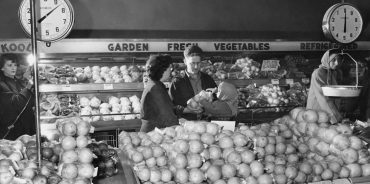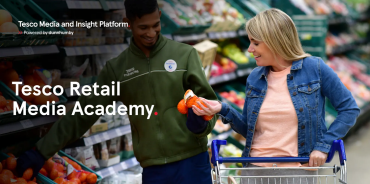Don’t be fooled: variety matters for every format
Picture this: you’re stood in the grocery store, browsing the yoghurt aisle. In front of you, a seemingly endless selection. From low-fat and dairy-free, through to kefir, Icelandic, and probiotic, a dizzying variety of goods are on offer—and that’s before you’ve even started to think about flavour. Then, as you scan the shelves, something strange happens. Rather than making a choice, you end up walking away.
If you’ve ever experienced this phenomenon in person, then you’re not alone. In his 2012 book Troppa Scelta (Too Much Choice), Professor Gianpiero Lugli highlights what can best be described as the “variety paradox”. Choice, suggests Professor Lugli, is helpful. “Troppa scelta”, on the other hand, tends merely to be a distraction.
For retailers, this makes an already thin tightrope even harder to walk. As we’ve seen in a number of our international RPI studies1, assortment plays an important role in helping customers decide where to shop. Moreover, those retailers that get assortment right tend to outperform the competition—both commercially and in terms of shopper perceptions.
The question is, what does “right” actually look like today? With the variety paradox in mind, how do retailers find a balance between not enough choice and far too much?
Variety is a multidimensional concern
To answer this question, the first thing we need to understand is that variety isn’t a linear concept. Instead, it’s a nuanced, multidimensional concern. What do I mean by that? Simply that variety means different things to different shoppers.
Key to this are the existence of “subsets” of variety. A retailer might excel at assortment generally, but struggle in areas such as natural and organic produce, own-label, or locally sourced foods. This is important, because success or failure in these areas can have a notable impact on shopper behaviours.
Take the results of some of our most recent RPI studies, for instance—those for France, Italy, and Spain.
In those studies, we found that when retailers combine a good overall assortment with a strong selection of natural and organic produce, customers tend to feel a much deeper attachment with that banner. Overarching product breadth—with depth in one specific area—gives retailers an important boost to their emotional connection with shoppers.
A similar trend exists around customer spending, where own label is the focus. Retailers that offer a good variety of own (or private) label products also tend to earn a larger share of the customer wallet. Practicality matters too, with retailers that provide a good “one stop shop” experience also likely to see higher spending, but own label is the driving force here.
Clearly, this additional nuance adds an element of complexity for retailers. As well as being “good” at assortment as a whole, they also need to deliver sufficient variety in a number of specific areas too. As a result, however, they also have an increasingly broad set of levers to pull upon when trying to meet their objectives.
Assortment matters, whatever the format
The good news is that those levers are available to every retailer, too. While it might be tempting to assume that variety is solely a hypermarket-level concern, that line of thinking can only take us so far.
Evidence for that can be found in the tables for France, Italy, and Spain below. Included in each are the highest-scoring retailers for assortment in their respective region—overall, for local and organic produce, and then for own label.
| France | ||
| Variety: Overall | Variety: Local and Organic | Variety: Own Label |
| E.LeClerc | Bicoop | Carrefour Hyper |
| Carrefour Hyper | La Vie Claire | E.LeClerc |
| Auchan Hyper | Naturalia | Auchan Hyper |
| Cora & Houra | Grand Frais | U |
| U | E.LeClerc | Cora & Houra |
| Italy | ||
| Variety: Overall | Variety: Local and Organic | Variety: Own Label |
| Esselunga | Iper – LaGrande I | Coop |
| Coop | Mercató | Esselunga |
| Iper – LaGrande I | Coop | Conad |
| Mercató | Esselunga | Famila |
| Famila | Ali | Iper – LaGrande I |
| Spain | ||
| Variety: Overall | Variety: Local and Organic | Variety: Own Label |
| Carrefour | Carrefour | Lidl |
| Lidl | Bonpreu | Carrefour |
| DinoSol/HiperDino | Gadis | Mercadona |
| Alcampo | DinoSol/HiperDino | DinoSol/HiperDino |
| Bonpreu | Lidl | Alcampo |
Clearly, traditional hypermarket players do perform well here. E.LeClerc, Esselunga, and Carrefour all sit at the top of their country’s ratings for variety overall. At the same time, the presence of names like Lidl and Famila tells us that creating a successful assortment isn’t just about having enough space—it’s about knowing how to use it, too.
This becomes even clearer when we look at those retailers that shoppers say have shown the greatest improvements in their assortment. Tracking satisfaction with variety over the past few years, we found that:
- Discounters, including Lidl in France and Eurospin in Italy, have achieved some of the greatest gains.
- Supermarkets such as Italy’s Famila, Spain’s Ahorramàs, and France’s Grand Frais have also performed well.
- Coviran—a Spanish convenience chain—has also delivered a major improvement in terms of customer satisfaction with variety.
As might be expected, hypermarket banners including Auchan, Eroski, and Iper – La Grande I have also managed to build on their existing strengths around variety. All the same, the performance improvements demonstrated by other formats is testament to the fact that variety is an opportunity for all.
Right is what your customers say it is
And so, back to that original question: what does “right” look like when it comes to variety today?
While it might be something of a cheat, the truth is that there is no answer to that question; not a singular one, at least. Across multiple formats, across vastly different categories, and even across different geographic locations, what’s “right” is what your customers want.
It’s about tapping into their conscious and subconscious needs—and making sure that your range serves as a genuine reflection of both.
Find your own balance between too much and not enough with dunnhumby Assortment. Refreshed and upgraded for 2024, dunnhumby Assortment includes a wealth of AI-powered features including automated planogram creation, intelligent assortment recommendations, and predictive analytics.
1 The RPI—or Retailer Preference Index—is a global research study that explores the link between shopper needs and commercial success.
TOPICS
RELATED PRODUCTS
Create customer-centric ranges using AI-powered science
Create customer-centric, localised assortmentsActionable insight for sustainable category growth
Understand what matters most to CustomersThe latest insights from our experts around the world
Winning with private brands, the customer-first way
How to overcome assortment challenges? Lessons from history
Unlocking success: why agency planning teams should get Tesco retail media certified




